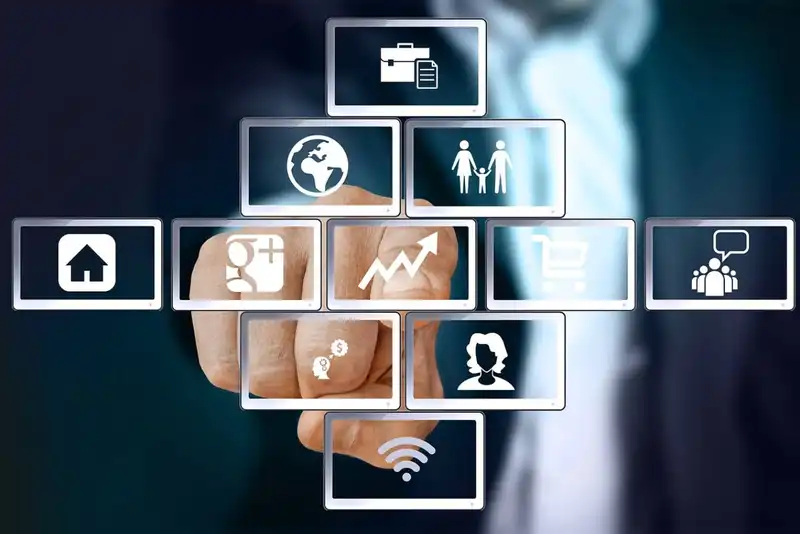Stay Ahead of the Competition With Restaurant Automation

Insight into Automation
Restaurants that want to remain competitive in the food industry need to take steps to incorporate automation into their business model.
Restaurant automation has been providing more efficient and improved dining experiences and offers benefits to both the restaurants themselves and their clients.
Discover how this automation is changing the restaurant industry and the benefits of incorporating it into your restaurant.
The Impact of Automation on the Restaurant Industry

Restaurant automation using technology can optimize the overall operations, be cost-effective, and speed up processes. Let's explore some of the ways that restaurants are incorporating automation into their businesses as they move further into the digital area.
Self-Payment
Among the most common examples of restaurant automation are self-payment tablets or similar devices. Customers do not have to wait for a server, which results in less wasted time for them and quicker table turnover for the restaurant.
Self-Ordering
The other incredibly common example is self-ordering, either from self service kiosks in the front of fast casual chains, from online ordering and mobile applications, or from tablets on the table.
Reservations
Automating reservations can save hours of time for the hosts in a restaurant and allow back house staff to properly prepare for lunch and dinner rushes.
Monitoring Capacity
Smart systems can monitor restaurant capacity in real-time, even making judgment calls to improve the customer experience and alleviate the stress of employees. This type of restaurant technology is so beneficial at improving the guest experience by allowing front and back house staff to properly gauge customer expectations and wait times.
Scheduling
The use of technology and analyze scheduling data to automatically schedule staff based on demand, skill level, and roles. This helps lower labor costs by effectively managing how many and which employees are expected to be on what shift and when.
Robotic Food Preparation
Different types of robotic assistants can be programmed to accomplish some of the repetitive tasks involved in preparing dishes. This helps expedite the time it takes for an order to be placed and when it is delivered. Robotic food preparation can improve the guest experience overall.
Self-Serving Drinks
There is an increase in bars and restaurants where customers serve their own drinks. For instance, Clouds Brewing, in Chicago, and Tapster in Durham, North Carolina, have incorporated this restaurant technology into their current models. These self service kiosks over diners a fun and enjoyable experience while also allowing the bar owners to cut back on labor expenses.
Automated Waitstaff
In recent years, pilot programs with automated waitstaff that run food to tables and/or bus them have started to become incorporated into food businesses. These robotic servers utilize sensors to prevent collisions and are programmed with the locations of the tables.
Buttons to Summon Servers
Some restaurants are incorporating buttons into the tables to summon servers. This is particularly popular in restaurants that want to minimize the interruptions from servers constantly checking on tables.
Managing Inventory and Waste
Robotics and smart analytics can help make predictions for food needs and assist with order forecasting. Meanwhile, automated measuring can help ensure accurate portions are being added to each meal and there is an exact measure of the products being used.
Loyalty Programs
Automated loyalty programs can be customized to appeal to clients based on their order history. Many fast food and fast casual chains have incorporated this into their current platforms and it has contributed to a rise in consumer loyalty.
Benefits of Restaurant Automation

Restaurants around the world are benefiting from automation in a variety of ways. The benefits of automation extend to the clients as well as the restaurants themselves.
Lower Costs
While there is an initial investment in the technology for automation, it results in lower continued costs. After all, robots do not require payment or benefits as humans do.
Automation allows restaurants to have employees focus on tasks that require humans, such as greeting guests or complicated cooking.
Increased Orders
According to research done in the area of automation, the self-service point-of-sale system increases checks by 21%, on average. This is beneficial due to the increased efficiency of when customers order their food.
This gives more customers the chance to make orders and helps to improve customer service by allowing employees to focus their energy more efficiently on improving the guest experience and serving food.
Assist Employees
The use of automation and technology in restaurants assists employees by reducing their workload and the degree to which they need to multitask.
Between taking orders, running food, bussing tables, collecting payment, and checking on tables, employees have to multitask to a high degree. By reducing multitasking, you can avoid excessive stress for employees and reduce the risks of mistakes.
Improved Employee Retention
Employees who work with automated technologies will have reduced stress, due to the need to complete fewer tasks. This will translate into happier employees who feel that they are valued and not being overworked for their minimum wage pay.
That job satisfaction leads to better employee retention. Improved employee retention saves you money spent on hiring and training and improves the customer experience.
Quicker Table Turnover
For restaurants, table turnover is a significant factor in profits and automation can speed this up via actions like bussing and self-payment. Companies responsible for self-payment tablets estimate this technology alone saves six to nine minutes for each table.
Happier Clients
Restaurant automation can lead to happier clients thanks to the prompt service and its consistency. For example, the ability to order from a tablet or kiosk eliminates the need to wait in line or for the server to appear, as does the ability to pay in the same ways.
Conclusion
- Restaurant automation can improve efficiency by automating time-consuming and repetitive tasks that do not require human attention.
- Restaurants worldwide already use automation for ordering, making payments, making reservations, loyalty programs, serving food, bussing tables, inventory management, and more.
- Automated ordering and payments can be done via kiosks, mobile applications, and tablets at the tables.
- Self-service POS systems are connected to an increase in the size of orders, resulting in profits.
- Automation can extend to repetitive steps in cooking, allowing cooks to focus on the complicated aspects of food preparation.
- Restaurant automation can result in happier clients due to more efficient service and ordering times.
- Restaurant automation improves the bottom line by faster table turnover, lower costs, larger orders, and greater employee retention.
- Restaurant automation provides assistance to employees, reducing their need to multitask and therefore their stress and the risk of mistakes.
- Automation requires an initial investment, but it pays for itself quickly via the reduced costs, faster turnover, and other factors mentioned.